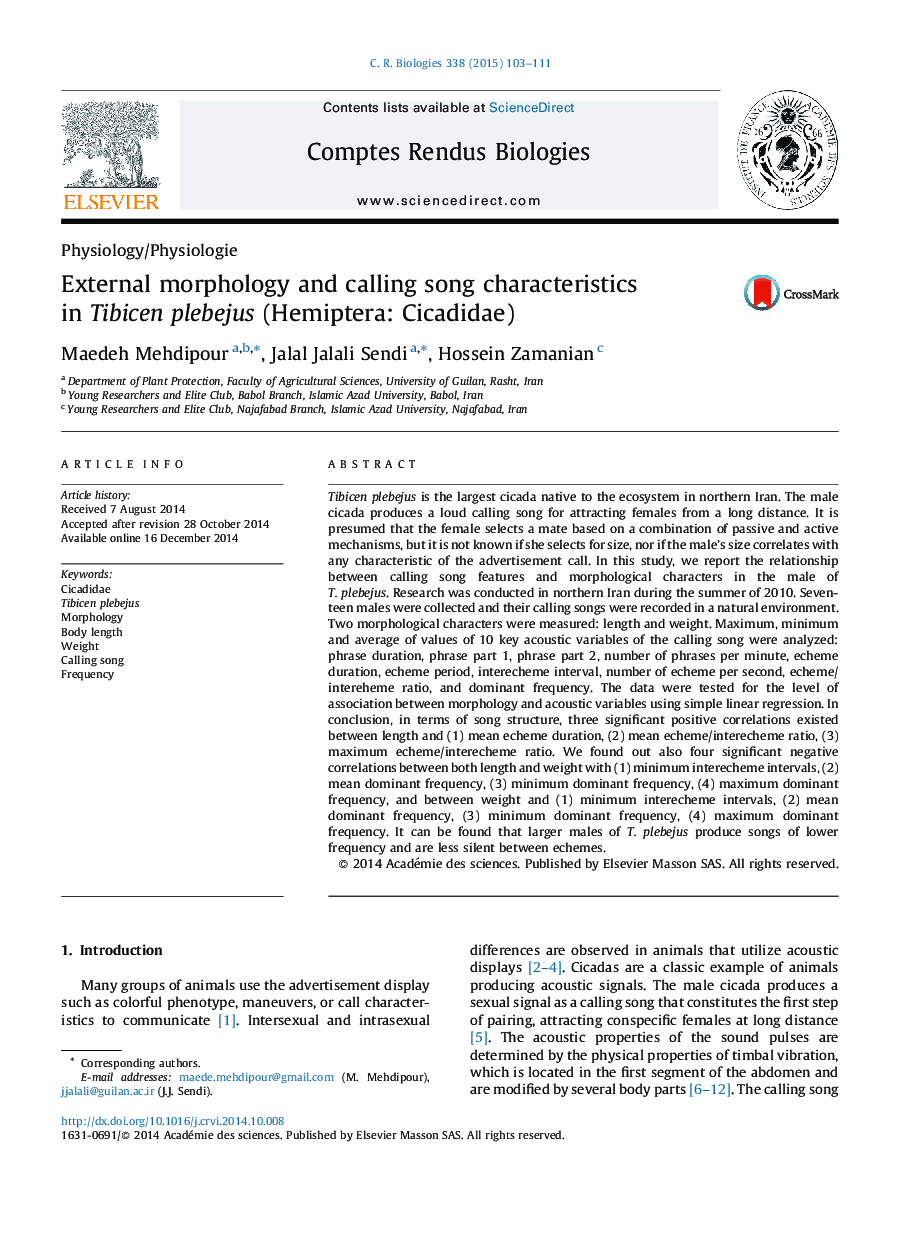| کد مقاله | کد نشریه | سال انتشار | مقاله انگلیسی | نسخه تمام متن |
|---|---|---|---|---|
| 2783368 | 1153739 | 2015 | 9 صفحه PDF | دانلود رایگان |
عنوان انگلیسی مقاله ISI
External morphology and calling song characteristics in Tibicen plebejus (Hemiptera: Cicadidae)
دانلود مقاله + سفارش ترجمه
دانلود مقاله ISI انگلیسی
رایگان برای ایرانیان
کلمات کلیدی
موضوعات مرتبط
علوم زیستی و بیوفناوری
علوم کشاورزی و بیولوژیک
علوم کشاورزی و بیولوژیک (عمومی)
پیش نمایش صفحه اول مقاله

چکیده انگلیسی
Tibicen plebejus is the largest cicada native to the ecosystem in northern Iran. The male cicada produces a loud calling song for attracting females from a long distance. It is presumed that the female selects a mate based on a combination of passive and active mechanisms, but it is not known if she selects for size, nor if the male's size correlates with any characteristic of the advertisement call. In this study, we report the relationship between calling song features and morphological characters in the male of T. plebejus. Research was conducted in northern Iran during the summer of 2010. Seventeen males were collected and their calling songs were recorded in a natural environment. Two morphological characters were measured: length and weight. Maximum, minimum and average of values of 10 key acoustic variables of the calling song were analyzed: phrase duration, phrase part 1, phrase part 2, number of phrases per minute, echeme duration, echeme period, interecheme interval, number of echeme per second, echeme/intereheme ratio, and dominant frequency. The data were tested for the level of association between morphology and acoustic variables using simple linear regression. In conclusion, in terms of song structure, three significant positive correlations existed between length and (1) mean echeme duration, (2) mean echeme/interecheme ratio, (3) maximum echeme/interecheme ratio. We found out also four significant negative correlations between both length and weight with (1) minimum interecheme intervals, (2) mean dominant frequency, (3) minimum dominant frequency, (4) maximum dominant frequency, and between weight and (1) minimum interecheme intervals, (2) mean dominant frequency, (3) minimum dominant frequency, (4) maximum dominant frequency. It can be found that larger males of T. plebejus produce songs of lower frequency and are less silent between echemes.
ناشر
Database: Elsevier - ScienceDirect (ساینس دایرکت)
Journal: Comptes Rendus Biologies - Volume 338, Issue 2, February 2015, Pages 103-111
Journal: Comptes Rendus Biologies - Volume 338, Issue 2, February 2015, Pages 103-111
نویسندگان
Maedeh Mehdipour, Jalal Jalali Sendi, Hossein Zamanian,